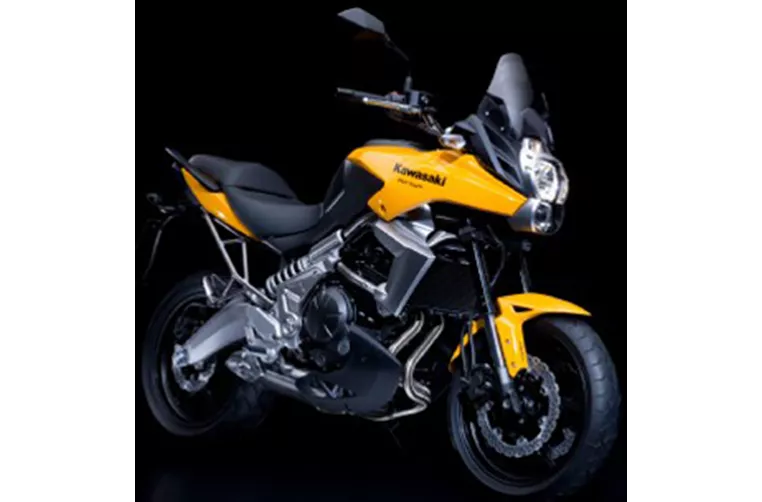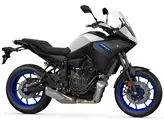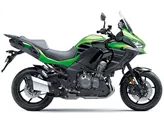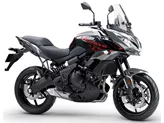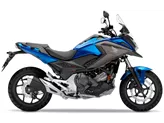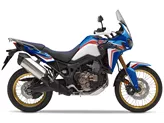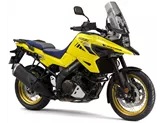Kawasaki Versys 1000 2012 vs. Kawasaki Versys 650 2010

Kawasaki Versys 1000 2012

Kawasaki Versys 650 2010
Vue d’ensemble - Kawasaki Versys 1000 2012 vs Kawasaki Versys 650 2010
The Kawasaki Versys 1000 model year 2012 and the Kawasaki Versys 650 model year 2010 are both enduro motorcycles that offer unique features and capabilities.
Starting with the engine and drive train, the Versys 1000 is equipped with an in-line, 4-cylinder engine with a displacement of 1043cc. It has a bore of 77mm and a stroke of 56mm, delivering a powerful engine power of 118 HP and a torque of 102 Nm. On the other hand, the Versys 650 is equipped with an in-line, 2-cylinder engine with a displacement of 649cc. It has a slightly larger bore of 83mm and stroke of 60mm, resulting in a lower engine power of 64 HP and torque of 61 Nm.
Both motorcycles have electric starters and chain transmissions, providing ease of use and efficient power delivery. However, the Versys 1000's engine offers more power and torque, making it more suitable for riders looking for a high-performance motorcycle.
In terms of suspension, both motorcycles feature upside-down telescopic forks in the front. However, the Versys 1000 offers more adjustment options with compression, preload, and rebound adjustments, allowing riders to fine-tune their suspension settings for optimal comfort and handling. The Versys 650, on the other hand, only has rebound adjustment.

Kawasaki Versys 1000 2012
In terms of chassis, the Versys 1000 features an aluminum frame, which provides a lightweight and rigid structure, contributing to its sporty and comfortable handling. The Versys 650, on the other hand, has a steel frame, which may not be as lightweight but still offers a sturdy and reliable foundation.
Both motorcycles have double disk brakes in the front, providing excellent stopping power and control.
When it comes to dimensions and weights, the Versys 1000 has a wider rear tire width of 180mm compared to the Versys 650's 160mm. The Versys 1000 also has a longer wheelbase of 1520mm, which contributes to its stability and straight-line performance. Both motorcycles have the same seat height of 845mm, making them accessible to a wide range of riders. The Versys 1000 is slightly heavier with a kerb weight of 239kg compared to the Versys 650's 209kg.

Kawasaki Versys 650 2010
In terms of fuel capacity, the Versys 1000 has a larger fuel tank capacity of 21 liters compared to the Versys 650's 19 liters. This allows for longer rides without the need for frequent refueling.
In terms of strengths, the Versys 1000 offers a silky running powerplant, a sporty and comfortable chassis, efficient wind protection, and a cushioned seat. These features make it a versatile and comfortable motorcycle for long rides. On the other hand, the Versys 650 is praised for being absolutely suitable for everyday use, thanks to its interesting concept and very low fuel consumption.
As for weaknesses, the Versys 1000 has been noted to have a slight tipping in curves, which may take some getting used to. Additionally, its design has been subject to debate. On the other hand, the Versys 650's performance is not as high as the Versys 1000, which may not satisfy riders looking for a more powerful motorcycle.
Overall, the Kawasaki Versys 1000 2012 and the Kawasaki Versys 650 2010 offer different levels of performance and features. The Versys 1000 is more powerful and offers more adjustment options, making it suitable for riders seeking a high-performance and versatile motorcycle. On the other hand, the Versys 650 is more fuel-efficient and has a lower performance, making it a practical choice for everyday use.
Caractéristiques techniques Kawasaki Versys 1000 2012 par rapport à Kawasaki Versys 650 2010
Avantages et inconvénients en comparaison
Avantages et inconvénients en comparaison
Kawasaki Versys 1000 2012

Avec aucun autre bigenduro, il n'est possible de rouler aussi fort au niveau des genoux et de se retrouver ainsi très loin sur la grille de départ. Ceux qui se sentent souvent agressés sur la route des vacances devraient riposter avec la Versys 1000. Ce qui prouve que bigenduro et quatre cylindres sont compatibles.
Kawasaki Versys 650 2010
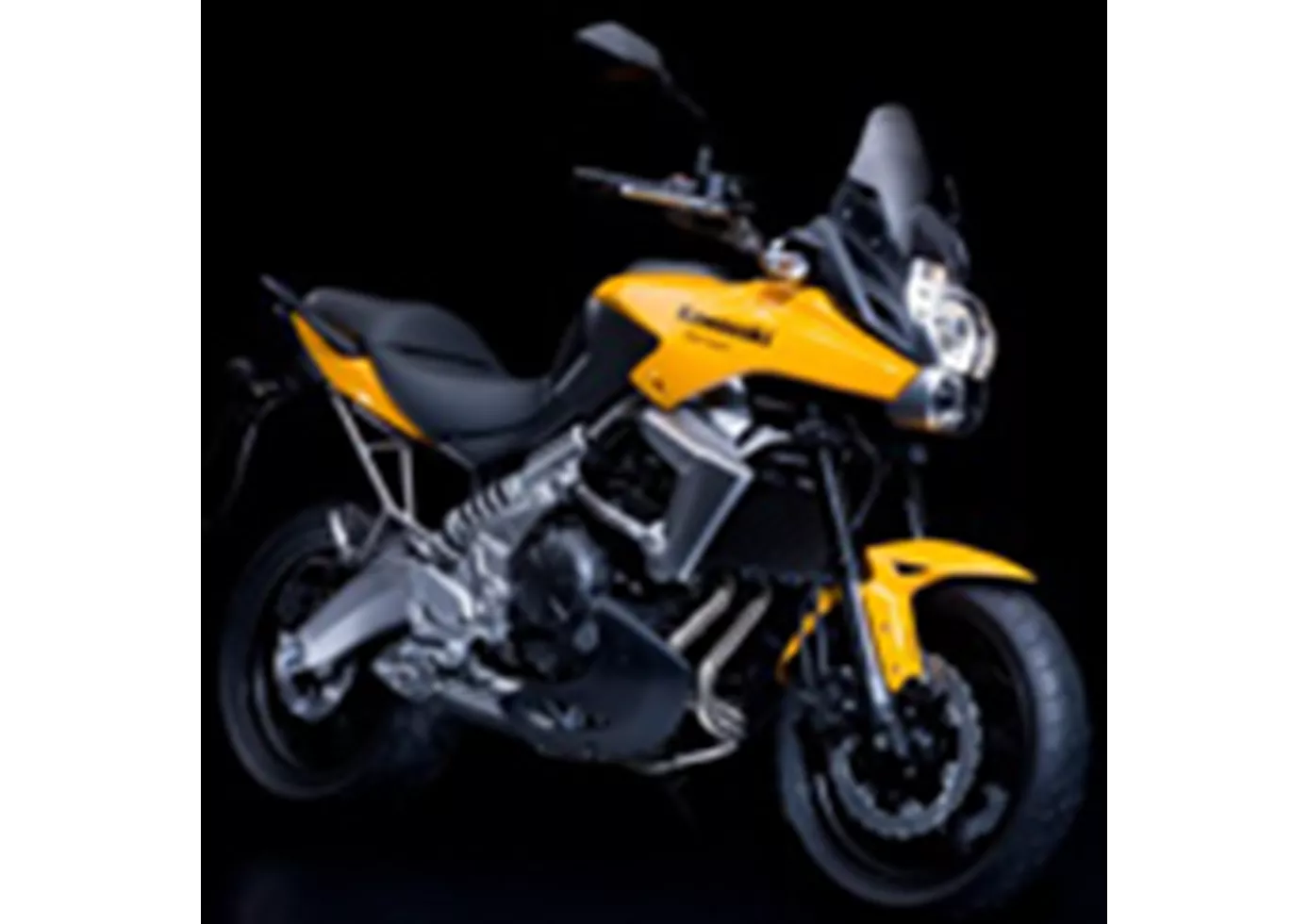
Avec seulement 211 kg avec les pleins, il est particulièrement facile à manier en montagne. Dans l'ensemble, elle est à l'aise presque partout, une moto de tous les jours avec un petit quelque chose en plus. Avec un nouveau phare et un design modernisé, la Versys repart à l'attaque.
Comparaison des prix Prix moyen du marché Kawasaki Versys 1000 vs Kawasaki Versys 650
There are a few key differences between a Kawasaki Versys 1000 2012 and a Kawasaki Versys 650 2010. There are the same number of bikes of both models available on the 1000PS.de marketplace, specifically 10. It takes less time to sell a Kawasaki Versys 650 with 61 days compared to 87 days for the Kawasaki Versys 1000. Since model year 2012 1000PS.de editors have written 19 reviews for the Kawasaki Versys 1000 and 39 reviews for the Kawasaki Versys 650 since model year 2007. The first review for the Kawasaki Versys 1000 was published on 11/7/2011 and now has more than 8,400 views. This compares to more than 3,900 views for the first review on Kawasaki Versys 650 published on 7/25/2006.

